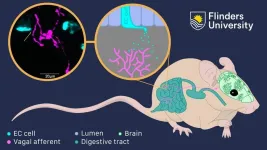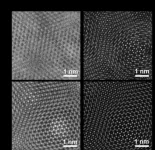(Press-News.org) A group led by researchers at Nagoya University and Meijo University in Japan has developed a disinfection technology that uses low-temperature plasma generated by electricity to cultivate environmentally friendly hydroponically grown crops. This innovative technology sterilizes the crops, promoting plant growth without the use of chemical fertilizers. Their findings appeared in Environmental Technology & Innovations.
In hydroponic agriculture, farmers cultivate plants by providing their roots with a nutrient solution. However, the nutrient solution can become infected with pathogenic E. coli strains, contaminating the crop and leading to foodborne illnesses.
To avoid this problem, farmers use chemical treatment to sterilize the nutrient solution before and during cultivation. In this process, the nutrient solution is replaced. Unfortunately, this can harm the environment because the chemicals can contaminate water and produce greenhouse gas emissions in their production process.
“Our results suggest a completely new way of disinfecting,” author Professor Masafumi Ito of Meijo University said. “Our technology can potentially reduce the production of pesticides that use fossil fuels, pollution of the environment, and residuals.”
Instead of agrochemicals, the team’s technique performed sterilization using plasma. Plasma is gas with small electric charges, known as ions and electrons, and electrically neutral reactive particles in it. The team created the low-temperature plasma using a plasma generator.
Their method targets the amino acid tryptophan in fertilizer, which is vital for plant growth and development. When the nutrient solution is irradiated with plasma, the electrons of the plasma generate oxygen radicals, highly unstable oxygen particles, that then produce tryptophan radicals.
Although the plant can still use the altered tryptophan in its metabolism, the radicals inactivate the enzymes involved in carbon metabolism in E. coli. Metabolomic analysis revealed the inactivation of the glycolytic and tricarboxylic acid circuits, which are essential for the bacteria’s survival, and inactivation of the key enzyme GAPDH. The result is sterile crops in a shorter period, a major advantage over conventionally used chemical-based techniques.
“We developed a sterilization technology using oxygen radicals, which is promising as a hygiene control technology for nutrient solution in modern hydroponic cultivation,” said lead author, Professor Kenji Ishikawa of the Nagoya University Center for Low-temperature Plasma Sciences. “As the use of chemical pesticides is restricted under the SDGs and the Green Strategy, our innovative technology can be used for sterilization simply by converting the atmosphere containing nitrogen, oxygen, and water vapor into low-temperature plasma based on electrical energy obtained from natural energy. This technology is expected to promote technological development toward the goal of eliminating fossil fuels and reducing greenhouse gases.”
END
Low-Temperature Plasma used to remove E. coli from hydroponically grown crops
2024-02-27
ELSE PRESS RELEASES FROM THIS DATE:
UK cancer treatment falls behind other countries
2024-02-27
Two major studies part-funded by Cancer Research UK reveal that the use of chemotherapy and radiotherapy in the UK has lagged behind comparable countries in the past decade
Patients faced longer waits to begin key cancer treatment, which could be impacting people’s chances of survival in the UK
With an upcoming UK general election, Cancer Research UK is calling on political leaders to step up and ensure patients get the level of care that they deserve
People in the UK were treated with chemotherapy ...
Gut-brain communication turned on its axis
2024-02-27
The mechanisms by which antidepressants and other emotion-focused medications work could be reconsidered due to an important new breakthrough in the understanding of how the gut communicates with the brain.
New research led by Flinders University has uncovered major developments in understanding how the gut communicates with the brain, which could have a profound impact on the make-up and use of medications such as antidepressants.
“The gut-brain axis consists of complex bidirectional neural communication pathway between the brain and the gut, which links emotional and cognitive ...
NSF and DOE establish a Research Coordination Network dedicated to enhancing privacy research
2024-02-27
In response to the rapidly evolving landscape of data collection and analysis driven by advances in artificial intelligence, the U.S. National Science Foundation (NSF) and the U.S. Department of Energy (DOE) have established a Research Coordination Network (RCN) dedicated to advancing privacy research and the development, deployment and scaling of privacy enhancing technologies (PETs). Fulfilling a mandate from the "Executive Order on the Safe, Secure, and Trustworthy Development and Use of Artificial Intelligence," the initiative advances the recommendations in the National Strategy to Advance ...
Want to encourage allyship? Highlight its appreciation, research shows
2024-02-27
Allyship — the practice of relatively advantaged group members acting with the intention to support, advocate and improve circumstances for relatively disadvantaged groups — is critical to promoting more inclusive and equitable organizations.
Not only are advantaged group members typically received more favorably within an organization than disadvantaged group members would be when they speak out against injustice, their allyship can improve disadvantaged group members’ psychological experience in the organization. For instance, men are more likely to believe other men, compared with women, when they confront sexism. And Black Americans report higher levels of self-esteem ...
UM School of Medicine awarded $3.5 million in federal funding to expand medical countermeasures program
2024-02-26
University of Maryland School of Medicine (UMSOM) Dean Mark T. Gladwin, MD, announced today that UMSOM faculty scientists have been selected as key contractors by the Biomedical Advanced Research and Development Authority (BARDA), for the federal agency’s Radiation Nuclear Animal Model Development program. The $3.5 million award that Erika Davies, PhD, Assistant Professor of Radiation Oncology, received to develop Acute Radiation Syndrome Animal Models, has a $16 million potential total. The Division of Translational Radiation Sciences (DTRS), within the Department of Radiation Oncology, will support this project.
Dr. Davies and her colleagues ...
Reimagining electron microscopy: Bringing high-end resolution to lower-cost microscopes
2024-02-26
Researchers at the University of Illinois at Urbana-Champaign have shown for the first time that expensive aberration-corrected microscopes are no longer required to achieve record-breaking microscopic resolution.
The field of microscopy is in the middle of a great revolution. Since the 1800s and the invention of the compound light microscope, there have only been a few major jumps in resolution to see different length scales: from bacteria and cells, to viruses and proteins, and even down to single atoms. Generally, ...
ACP recommends ways to better meet the health care and social needs of unhoused populations
2024-02-26
@Annalsofim
Below please find summaries of new articles that will be published in the next issue of Annals of Internal Medicine. The summaries are not intended to substitute for the full articles as a source of information. This information is under strict embargo and by taking it into possession, media representatives are committing to the terms of the embargo not only on their own behalf, but also on behalf of the organization they represent.
----------------------------
1. ACP Recommends Ways to Better Meet the Health Care ...
University of Technology Sydney chooses Figshare to drive the discoverability of non-traditional research outputs
2024-02-26
Figshare, a leading provider of institutional repository infrastructure that supports open research, is pleased to announce that the University of Technology Sydney (UTS) has chosen Figshare to support them in sharing, showcasing and managing their research reports and non-traditional research outputs.
UTS – Australia’s leading technology university – will use its Figshare repository and its integration with the Australian Research Data Commons Datacite DOI minting service to drive the discoverability and increase the impact of their research reports and non-traditional research outputs, ...
Five grand challenges for the future at the interface of engineering and medicine
2024-02-26
BIRMINGHAM, Ala. – Just imagine this, the creation of:
An artificially intelligent machine that acts as a human exocortex, a system that will interface with and make an old brain tick normally.
Human cells that can sense metastatic cancer or the boundaries of solid tumors and respond with killing of tumor cells, release of inflammatory payloads or bioluminescence to help guide surgical removal.
Manufactured vaccines that prevent or impede a cancer, block opioid action or reverse autoimmune diseases like multiple sclerosis.
These are a few of the far-reaching ideas put forward by 50 international biomedical engineering ...
Australian researcher's journey from kangaroo whisperer to global dance sensation
2024-02-26
Dr Weliton Menário Costa, a PhD graduate from The Australian National University (ANU), has been announced the overall winner of the 2024 global Dance Your PhD contest after wowing judges with his wickedly creative and quirky dance submission, ‘Kangaroo Time (Club Edit)’.
One of the world's leading researchers in kangaroo behaviour, he is the first person from ANU to win the Dance Your PhD competition, and just the fourth person from an Australian institution to do so since its inception in 2008.
Better known as ‘WELI’, the singer-songwriter, creator and biologist weaves together a funky beat, original songwriting, drag queens and Brazilian funk dancers ...





